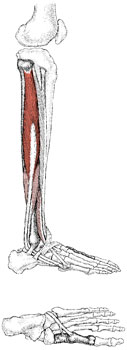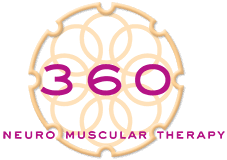Compartment Syndrome
Presenting symptoms
 An 18 year-old athletic, female student with active participation in several sports initially presented with bilateral calf tightness, and numbness and tingling in both feet. There was no history of direct trauma to her legs. Over the course of one and a half years her symptoms became worse, but not severe enough to stop her from playing soccer, basketball and lacrosse
An 18 year-old athletic, female student with active participation in several sports initially presented with bilateral calf tightness, and numbness and tingling in both feet. There was no history of direct trauma to her legs. Over the course of one and a half years her symptoms became worse, but not severe enough to stop her from playing soccer, basketball and lacrosse
Evaluation, clinical reasoning & treatment strategizing
Palpation assessment showed the calf muscles to be hypertonic on both sides, with decreased range of motion in the gastrocnemius and soleus muscles. Initial goals were to decrease the calf tightness and increase the range of motion at the ankle. Compartment syndrome was suspected but not confirmed. Because she was not in severe pain, deep neuromuscular massage was considered one of the best non-invasive procedures to reduce fascial restrictions, muscle tension and trigger points.
Treatment
Initially, hands-on therapy focused on decreasing the presence of trigger points in the calf muscles of both legs and increasing the range of motion. After consistent bi-weekly treatments, tightness symptoms had decreased slightly, but numbness in both feet was increasing. She saw an orthopedic doctor who diagnosed chronic bilateral compartment syndrome. She underwent a bilateral fasciotomy. During surgery, longitudinal incisions were made in the thick fascia surrounding the muscle to relieve pressure. She continued neuromuscular treatment six weeks after surgery to help with scar tissue. Two to three months after surgery symptoms of numbness and tingling had disappeared.
Outcomes and follow-up
The patient is a highly ranked soccer player who continues to come in for maintenance work and treatment for other sport related pain. This case is a good example of neuromuscular therapists working together with surgeons on three levels: First, to rule out possible reversal of symptoms via a non-invasive manual approach. Second, to achieve optimal post-operative healing. Third, to improve sports performance via ongoing soft-tissue maintenance.







